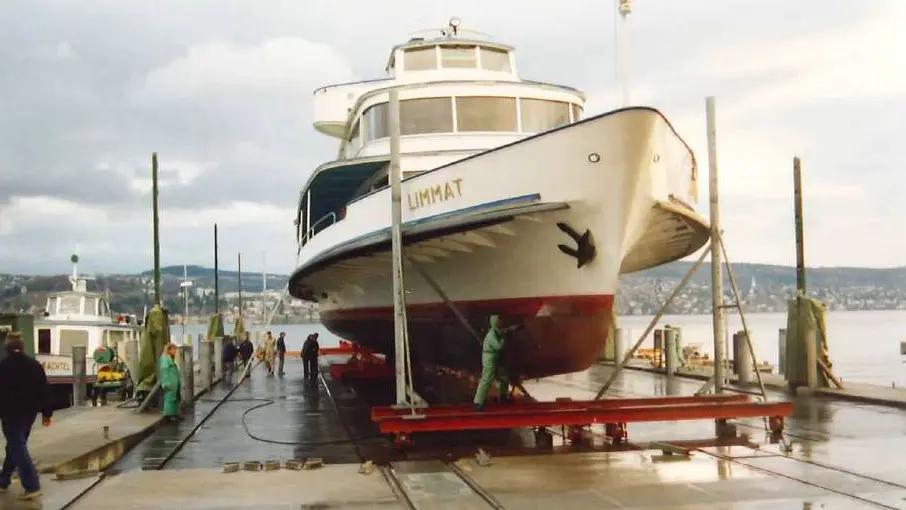
Complete overhaul of the hydraulics of a ship lift installed in 1983 including conversion to a biologically degradable hydraulic fluid in order to meet the latest requirements on water pollution control.

The past meets the present. A 40-year-old ship lift had to be overhauled and modified to meet the latest technological and ecological requirements. This project was won during a public invitation to tender and is intended to safeguard the operational reliability of the system over the course of the next few decades.
The successful conversion of our ship lift to an environmental friendly hydraulic solution was an impressive accomplishment. The BIBUS project manager had already demonstrated his experience and expertise during a partial overhaul in 1997. The rapid progress of the project and knowledge of the system and equipment are a testament to a high level of professionalism. Our ship lift is now not only more reliable and more powerful but also more environmentally friendly – an investment in the future.
Ruedi Wegmann
Maintenance specialist
Overhauling the hydraulic components of a 400-ton ship lift installed in 1983 and at the same time converting it to a biologically degradable hydraulic fluid required a great deal of know-how and experience in working on “vintage” technology. After decades of outdoor use, parts of the plant were suffering from severe corrosion, making disassembly and assembly difficult. In addition, the customer’s requirement that the overhaul was to be completed in just seven weeks while subject to ongoing supply bottlenecks caused by the coronavirus crisis posed a particular challenge.
In order to guarantee the operational reliability of the ship lift in the long term, the hydraulic system was comprehensively modernised. The main components, a total of 33 hydraulic cylinders, were completely overhauled. A central aspect consisted in the conversion to a biologically degradable hydraulic fluid in order to reduce the environmental impact to a minimum and to meet the standards set by the Swiss Water Protection Act (GSchG).
The conversion of the hydraulic fluid required, in particular, exacting craftsmanship and precise work. The very long pipes used in this large plant were reused. This meant that they had to be completely drained and then flushed. Another difficulty was that the new fluid dissolved the deposits built up by the old fluid over the decades. To prevent a system failure, these deposits were flushed out and filtered in several steps. In addition, all seals and materials had to be checked and, if necessary, tested for incompatibility with the new fluid, and in some cases replaced.
A new hydraulic-oil supply system and new hydraulic valves were then installed in order to upgrade the “vintage” ship lift to the latest technical standards.
Due to our decades of experience in the construction of hydraulic systems and our long-standing employees, we are able to understand and modernise “old” systems. Within the scope of a public invitation to tender, this sustainable approach convinced ZSG to invest in the overhaul rather than a complete replacement.
As a systems solutions provider, we are able to deliver all hardware and software components from a single source. This ensures streamlined, cost-efficient and tightly scheduled project execution. This approach also offers advantages in terms of support and service, as we understand the entire system and are able to react quickly in the event of repairs thanks to our well-stocked warehouse.
Our customer was able to benefit from these advantages:
Through biologically degradable hydraulic oil
System components from a single source for rapid support
Comprehensive knowledge of the system and a single point of contact if problems occur
Overhaul instead of replacement
Discover how BIBUS HYDRAULIK AG contributed to the production efficiency of a tool manufacturer with a customized hydraulic solution.
Increased productivity and efficiency thanks to the new gravel-grading machine 2.0. This innovation “made in Switzerland” convinces through numerous benefits for the track layer.
Engineering and delivery of the complete hydraulic drive system for the largest snow blower in the world. This required our entire developmental expertise – from the concept to the engineering to the programming of the control software.